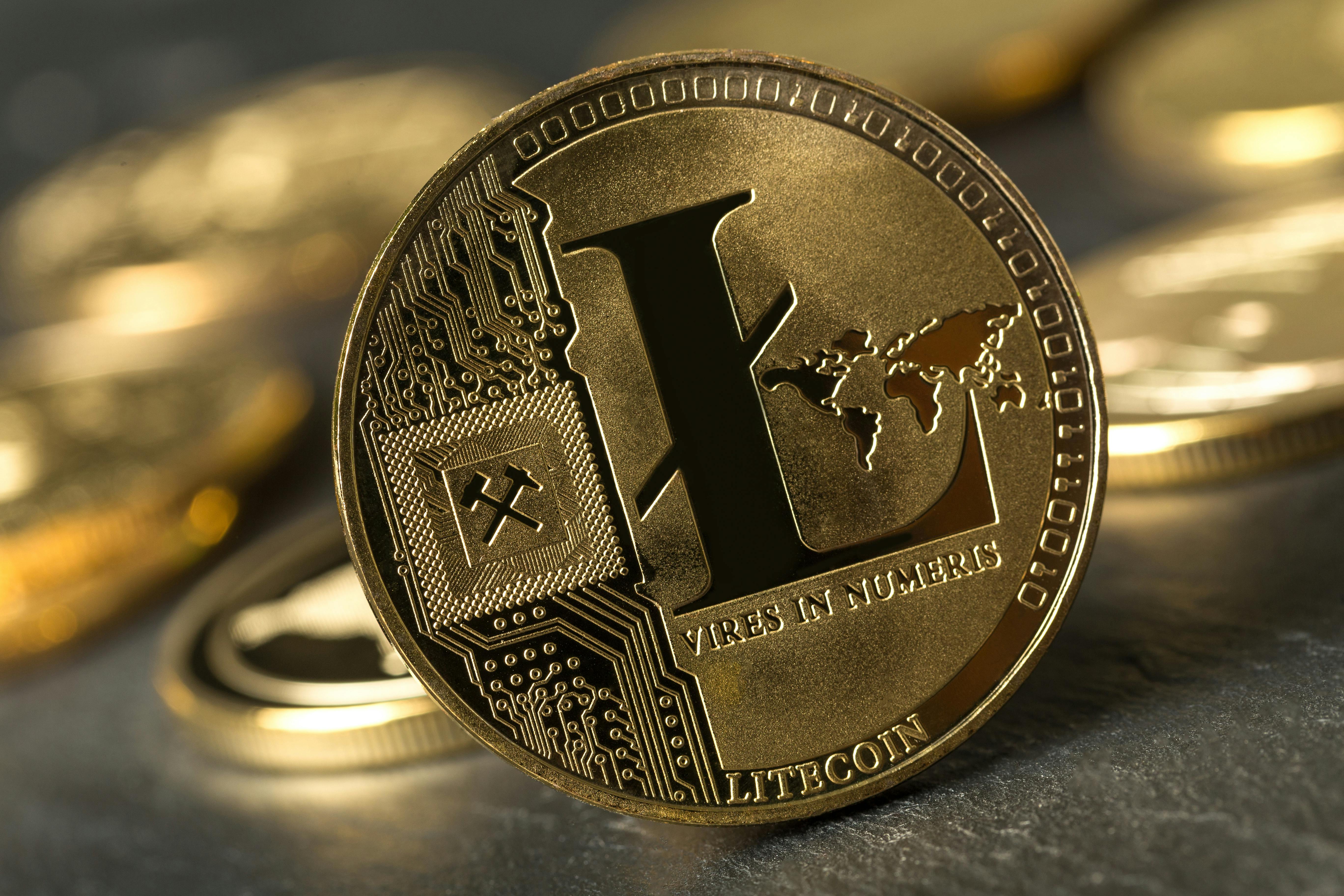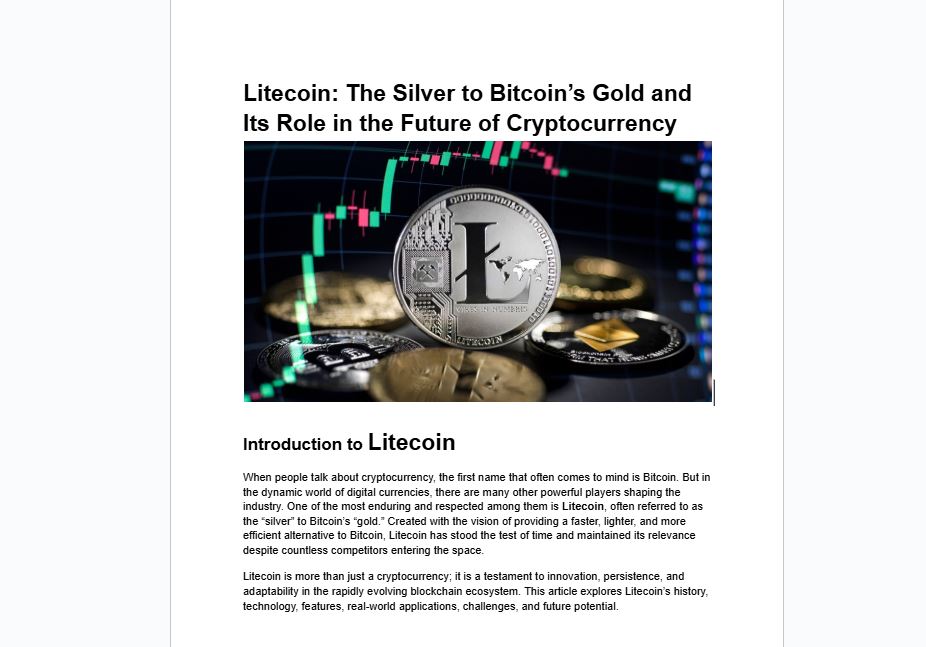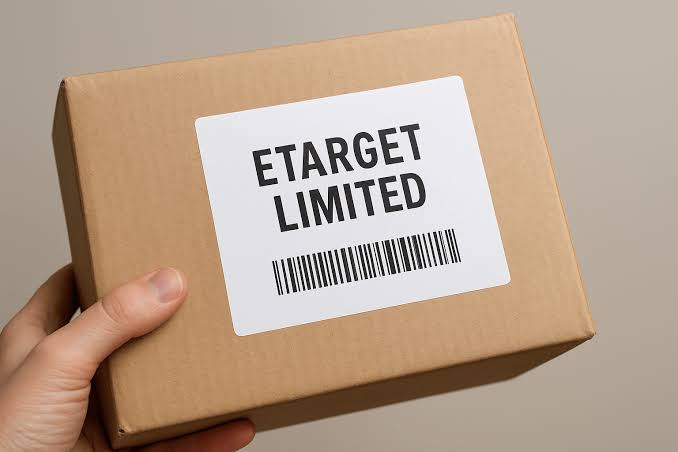Introduction to Litecoin
When people talk about cryptocurrency, the first name that often comes to mind is Bitcoin. But in the dynamic world of digital currencies, there are many other powerful players shaping the industry. One of the most enduring and respected among them is Lite coin, often referred to as the “silver” to Bitcoin’s “gold.” Created with the vision of providing a faster, lighter, and more efficient alternative to Bitcoin, Lite coin has stood the test of time and maintained its relevance despite countless competitors entering the space.
Lite coin is more than just a cryptocurrency; it is a testament to innovation, persistence, and adaptability in the rapidly evolving blockchain ecosystem. This article explores Lite coin’s history, technology, features, real-world applications, challenges, and future potential.
The Origins of Litecoin

Litecoin was introduced in 2011 by Charlie Lee, a former Google engineer with a deep passion for blockchain technology. Lee recognized Bitcoin’s groundbreaking potential but also saw areas where improvements could be made. His idea was not to compete with Bitcoin but to complement it by creating a cryptocurrency that was faster, cheaper, and more practical for everyday transactions.
Where Bitcoin was designed as a store of value, Lite coin was envisioned as a medium of exchange. The goal was to make Lite coin an efficient digital currency that people could actually use for purchases, remittances, and quick peer-to-peer transactions.
How Litecoin Works
Litecoin operates on a decentralized, peer-to-peer blockchain network, just like Bitcoin. However, there are several technical distinctions that make Lite coin unique.
Speed and Transaction Times
One of Lite coin’s defining features is its faster block generation time. While Bitcoin creates a new block roughly every ten minutes, Lite coin generates one every two and a half minutes. This significantly reduces confirmation times, allowing transactions to be processed more quickly.
Supply Limit
Litecoin has a maximum supply of 84 million coins, which is four times greater than Bitcoin’s cap of 21 million. This higher supply contributes to its accessibility and affordability, making it easier for newcomers to enter the crypto market.
Mining Algorithm
Litecoin uses a mining algorithm known as Scrypt, in contrast to Bitcoin’s SHA-256. This was designed to make mining more accessible to individuals with consumer-grade hardware, though over time, specialized mining equipment has emerged.
Fees and Costs
Litecoin transactions typically carry lower fees compared to Bitcoin. This cost-effectiveness has made Lite coin attractive for micropayments and cross-border transfers.
Litecoin’s Place in the Crypto Ecosystem
Lite coin has often been described as a testing ground for innovations that later get implemented in Bitcoin. For example, Segregated Witness (SegWit) and the Lightning Network, both important upgrades in blockchain technology, were first adopted by Lite coin before being integrated into Bitcoin.
Because of this pioneering role, Lite coin has earned a reputation as one of the most reliable and forward-thinking cryptocurrencies. Its long-standing presence and consistent performance have made it a trusted asset among investors and enthusiasts alike.
Use Cases and Real-World Applications
Litecoin is not just a speculative asset; it has practical applications that highlight its utility as a digital currency.
Everyday Payments
With its faster transaction times and low fees, Lite coin is well-suited for everyday transactions. Merchants around the world accept Lite coin as payment for goods and services, providing customers with more options for digital payments.
Remittances
Litecoin has been used as a tool for cross-border remittances. Sending money through traditional banks can be expensive and slow, but with Lite coin, individuals can send funds across the globe within minutes at a fraction of the cost.
Gateway to Cryptocurrency
Because of its affordability and accessibility, Lite coin has often served as an entry point for new investors exploring cryptocurrency for the first time. Its familiarity and resemblance to Bitcoin make it an attractive starting option.
Investment Asset
Many investors view Litecoin as a valuable component of a diversified cryptocurrency portfolio. Its history, market reputation, and consistent presence on major exchanges give it credibility as a long-term investment.
Litecoin vs. Bitcoin
Litecoin has always been closely compared to Bitcoin. While Bitcoin remains the leader in terms of market capitalization and adoption, Lite coin holds its own unique strengths. It is faster than Bitcoin when it comes to confirming transactions, and its fees are generally lower, making it more practical for smaller everyday payments.
In addition, Litecoin’s total supply is higher, contributing to its affordability and liquidity. It has also often led the way in adopting new technologies before Bitcoin. While Bitcoin is widely viewed as a digital store of value, Lite coin functions more as a practical digital currency, complementing rather than competing with it.
The Community Behind Litecoin
A major reason for Litecoin’s longevity is its active and passionate community. From developers and miners to traders and enthusiasts, the Lite coin community has consistently supported the project through both bullish and bearish market cycles.
The Litecoin Foundation, a nonprofit organization, plays a key role in promoting Lite coin adoption, developing partnerships, and advancing blockchain education. This foundation, led by Charlie Lee and other dedicated members, ensures that Lite coin continues to innovate and stay relevant in the broader crypto space.
Litecoin in the Market
Litecoin has remained one of the top cryptocurrencies in terms of market capitalization for more than a decade. Its resilience is a testament to its value proposition and consistent development. Unlike many projects that disappear after initial hype, Lite coin has proven its staying power.
Exchanges across the world list Lite coin, ensuring its liquidity and accessibility. It has become a staple in the portfolios of both casual traders and institutional investors.
Challenges Facing Litecoin
Despite its strengths, Litecoin faces several challenges in the ever-evolving world of cryptocurrency.
Competition
With thousands of cryptocurrencies available, Litecoin must continually innovate to maintain relevance. Newer blockchains with advanced features, such as smart contracts and decentralized finance, pose stiff competition.
Adoption Rate
Although Litecoin is widely accepted, its adoption is still limited compared to traditional payment systems. Expanding merchant adoption and user-friendly payment solutions remain crucial for growth.
Market Perception
Some critics argue that Litecoin has not differentiated itself enough from Bitcoin. While it offers faster transactions and lower fees, its lack of unique use cases beyond payments raises questions about its long-term role.
Litecoin’s Future Potential
Lite coin’s future appears promising, especially as global interest in cryptocurrency continues to grow. Its emphasis on speed, efficiency, and reliability ensures that it will remain a significant player in the market. The adaptability of its network and the loyalty of its community make it well-positioned for long-term relevance.
One possible area of growth is deeper integration with payment processors, which could increase merchant adoption and make Litecoin more accessible for everyday use. It also has potential to play a role in decentralized finance if developers expand its functionality, opening the door to lending, borrowing, and other financial services.
Scalability improvements may further enhance Lite coin’s transaction efficiency, allowing it to process higher volumes with ease. Additionally, mainstream partnerships with businesses and institutions could strengthen its reputation as a reliable digital currency and expand its use cases across global markets.
Resilience as a Digital Currency
Litecoin’s ability to withstand market volatility and technological competition demonstrates its resilience. As the cryptocurrency industry matures, Lite coin is likely to retain its status as one of the most trusted and recognized digital assets.
Why Litecoin Matters
Litecoin matters because it represents more than just a cryptocurrency. It embodies the spirit of innovation, the power of community, and the vision of creating practical solutions in the digital economy. It has consistently proven that it is not a passing trend but a cornerstone of the crypto ecosystem.
As blockchain technology reshapes finance, commerce, and communication, Litec oin remains a vital bridge between early cryptocurrency ideals and the realities of modern digital payments.
Conclusion
Litecoin has carved out its own unique space in the world of cryptocurrency. Often overshadowed by Bitcoin, it has nonetheless proven itself to be a reliable, innovative, and practical digital currency. With its faster transaction times, lower fees, and enduring community support, Lite coin has maintained its relevance for more than a decade.
Whether as a medium of exchange, a tool for remittances, or a valuable investment asset, Lite coin continues to demonstrate its utility and resilience. Its journey reflects the broader story of cryptocurrency: innovation, challenges, and the pursuit of a decentralized future.





